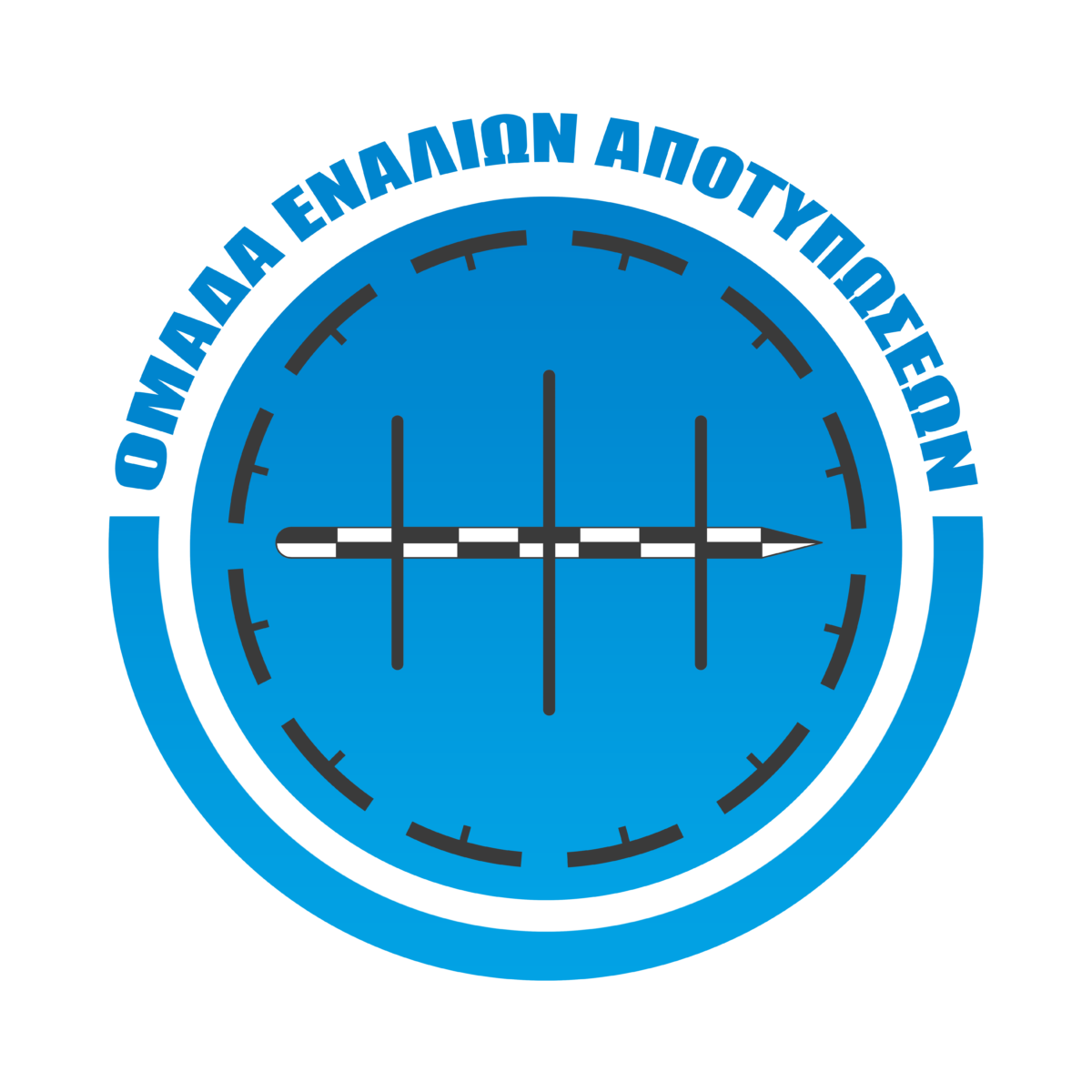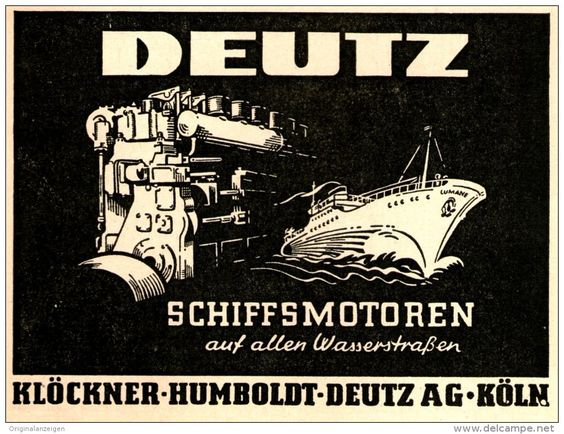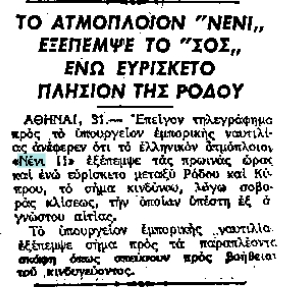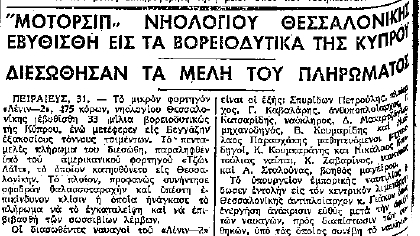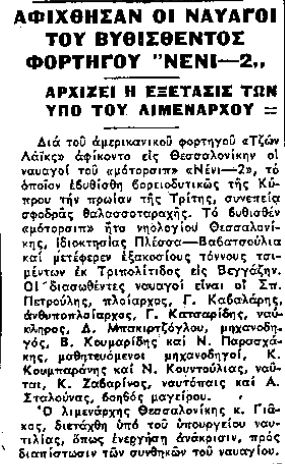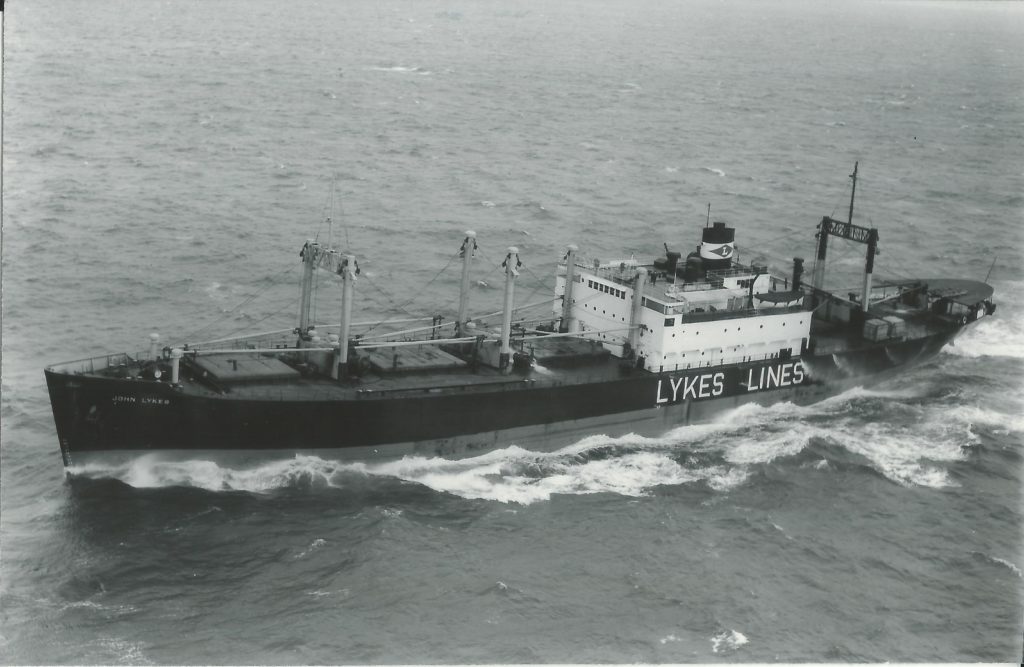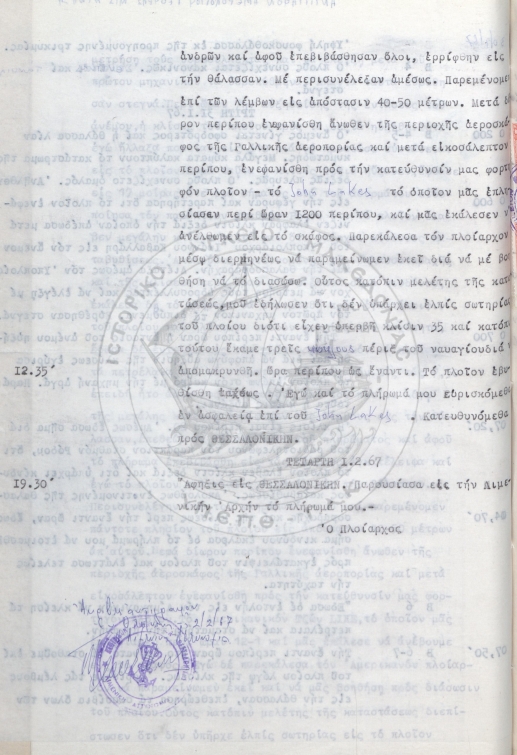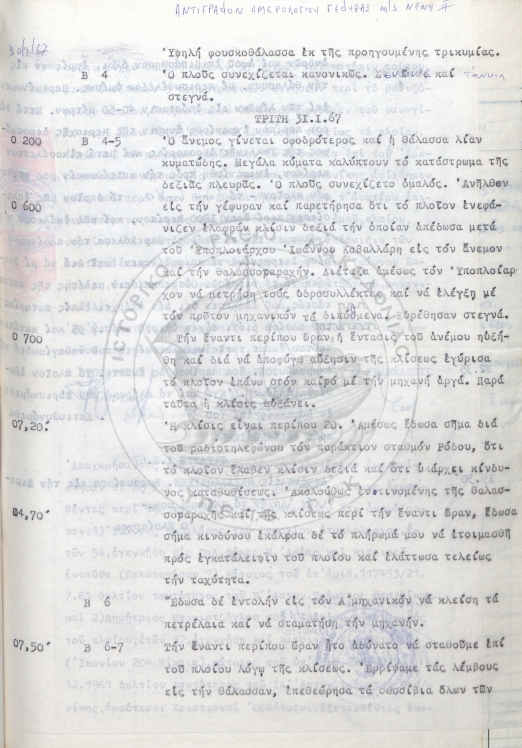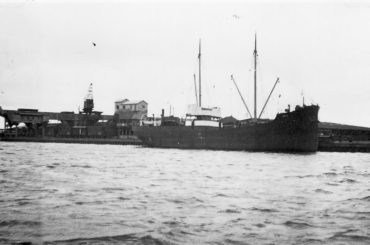The cargo ship MANGAN was ordered by Ernst Komrowski Reederei GmbH and built at the J. Frerichs & Co. shipyard in Einswarden and completed on January 24, 1924.
Source: Lloyd’s Ships Register
It was 50.2 metres in length and 8 meters in beam, with a capacity of 475 GRT.
Source: https://www.delcampe.net
It was powered by a six-cylinder Humboldt-Deutz diesel engine that produced 70 NHPs which drove a single propeller.
In 1939, it was sold to Norddeutscher Lloyd and renamed the NORDER TILL. In 1964, it was purchased by Theodore Vavatsoulia and renamed the NENI II.
On the 29th of January 1967, NENI II was loaded with 600 tons of lime at the port of Tripoli in Lebanon, bound for Benghazi, Libya. Commanded by Captain Spiros Peroulis and Lieutenant Ioannis Kavalaris, the ship departed from the port of Tripoli at 15:10 hrs, with northeast winds of 3 on the Beaufort scale and rough waves. On the 30th of January 1967 at 14:30 hrs, the ship sighted the Cape Lighthouse on Cyprus and at 18:00 hrs, the Paphos Lighthouse, again on Cyprus. The wind, now blowing north, had intensified to 4 Beaufort and turned the seas rough. On the 31st of January, the wind had further increased to 5 Beaufort and the waves began to surge over the deck. Around 06:00 hrs, there was slight listing to starboard, which the captain and his lieutenant believed to be caused by the wind and the high seas. By 07.00 hrs, the list had increased to an alarming 17 degrees. The captain contacted Rhodes to report the seriousness of the situation. At 07:40 hrs, he sent an SOS and instructed the crew to prepare to abandon ship while he slowed down the ship. He then ordered the first engineer to cut off the fuel supply and stop the engine.
Source: Macedonia newspaper 31/1/1967
By 07:50 hrs, the crew was no longer able to stay on board because of the severe listing, so lifeboats were deployed and the ship abandoned. The crew remained in the lifeboats at a safe distance of about 40 to 50 metres from the ship. Two hours later, a French plane appeared in the sky and 20 minutes after that, a ship was seen approaching.
It turned out to be an American cargo ship. It proceeded towards the lifeboats and beckoned the crew to board. The captain of the NENI II begged the American captain to remain in the area and try to save the sinking ship. After examining the situation, the American captain decided that because the list was now at 35 degrees, the ship was beyond saving. After three turns around the sinking ship, the American cargo ship left NENI II, which sank at 12:35 hrs.
Source: Macedonia newspaper 31/1/1967
_
Source: Macedonia newspaper 1/2/1967
After examining the ship’s log and submissions to the authorities, it was found that the ship which rescued the crew was either “John Like”…
The captain of the NENI II’s filing with the judicial authorities.
Source: Historical Archive of Macedonia
…or “John Lakes”.
NENI II’s Diary. Source: Historical Archive of Macedonia
Source: Historical Archive of Macedonia
A search of the records revealed no ships with either name. Turns out that it was actually the American cargo ship JOHN LYKES which had saved the day.
John Lykes
Source: U.S.T
_
Sources
- https://nok-schiffsbilder.de
- Lloyd’s Ships Register
- https://www.delcampe.net
- Newspaper Macedonia
- Historical Archive of Macedonia
- U.S.T.
[*] Ross J. Robertson is an Australian who has lived in Greece for the past thirty years. He has a BSc (Biology) and is an EFL teacher. He is the co-owner of two private English Language Schools and instructs students studying for Michigan and Cambridge University English Language examinations. He has written various English Language Teaching books for the Hellenic American Union (Greece), Longman-Pearson (UK) and Macmillan Education (UK). He published his debut novel (fiction/humour) entitled ‘Spiked! Read Responsibly’ in 2016. Moreover, he has written several spec screenplays and a number of newspaper articles, including an extensive series on the 75th anniversary of the WWII Liberation of Greece. A keen AOW and Nitrox diver, he is also a shipwreck and research enthusiast and has written features for UK Diver Magazine, US Diver and the Australian newspaper, Neos Kosmos. Ross continues to combine his expertise in English with his love of storytelling and local WWII history to produce exciting materials.
